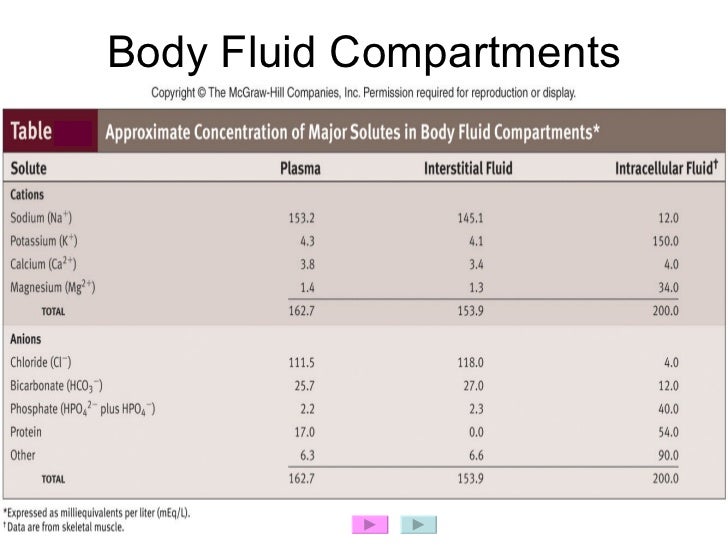

the higher concentration of proteins in the intravascular compartment as compared with that in interstitial fluid, which causes fluids to enter the vascular space. the hydrostatic pressure causes fluids to leave the vascular space, and b. Three major forces control the distribution of fluids across the capillary membrane (figure 2): a. The size of the intravascular compartment is determined by the overall size of the extracellular fluid compartment and by the Starling forces: they control the partition of fluids between intravascular and interstitial compartments across the capillary membrane that is crossed by salts like sodium chloride and by glucose but not by blood proteins (especially albumin).

Finally, the transcellular fluid compartment comprises the digestive, cerebrospinal, intraocular, pleural, peritoneal and synovial fluids but will not be further addressed in this review. The extracellular compartment is further subdivided into the interstitial and the intravascular compartments (blood volume), which contain two-thirds and one-third of the extracellular fluid, respectively. Consequently potassium largely determines the intracellular and sodium the extracellular compartment. The solute composition of the intracellular and extracellular fluid differs considerably because the sodium pump maintains potassium in a primarily intracellular and sodium in a primarily extracellular location. The intracellular compartment contains about two-third of the total body water and the remaining is held in the extracellular compartment. after puberty males generally have 2 to 10 percent higher water content than females (figure 1). the water content of a newborn, an adolescent and an elderly man are approximately 75, 60 and 50 percent b. The most important determinants of the wide range in water content are age and gender: a. Water makes up 50-75 percent of the body mass.


 0 kommentar(er)
0 kommentar(er)
